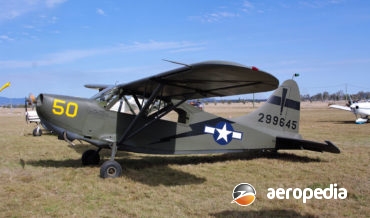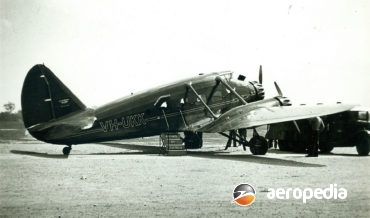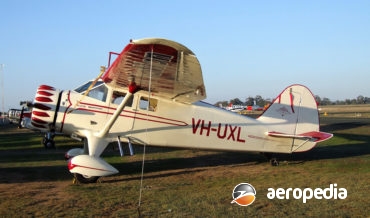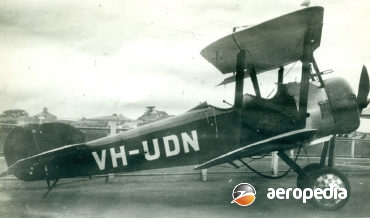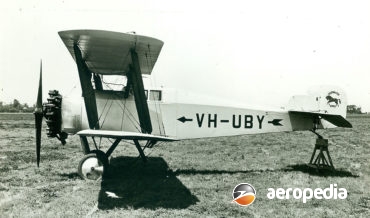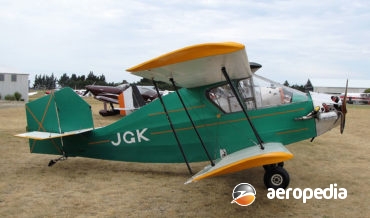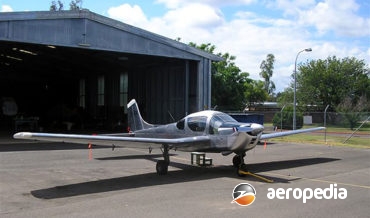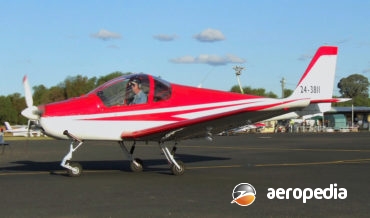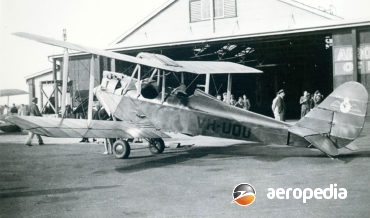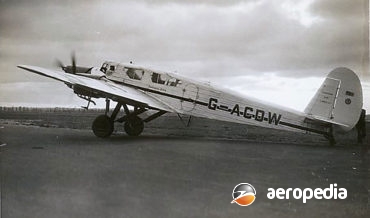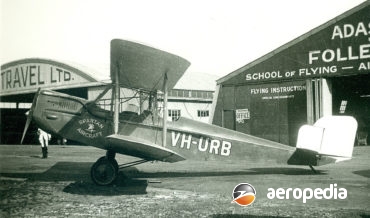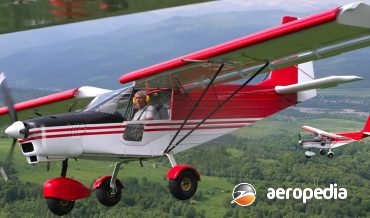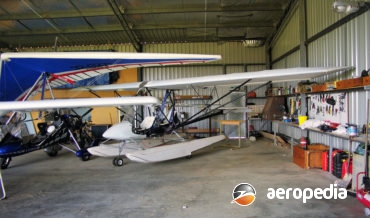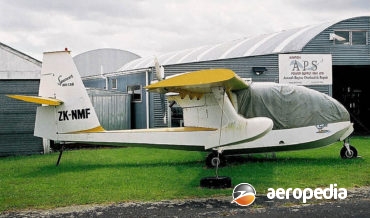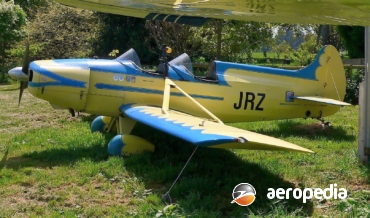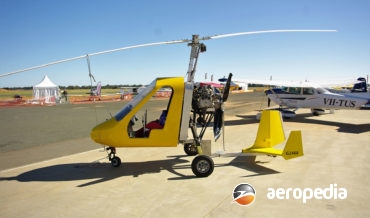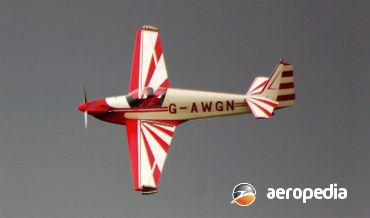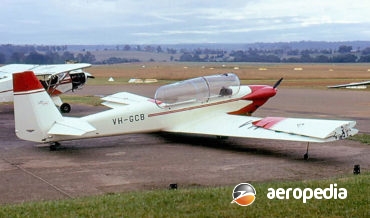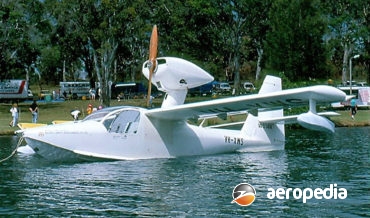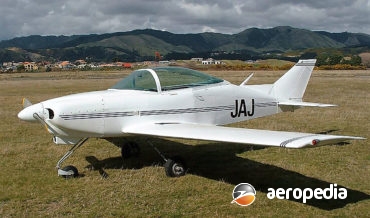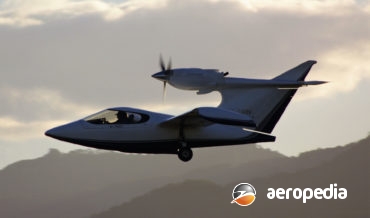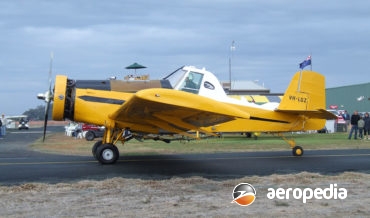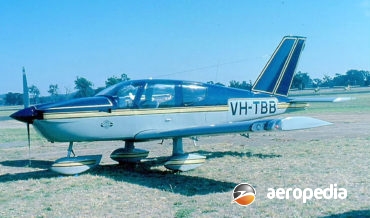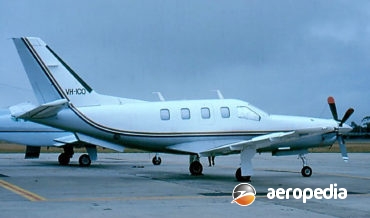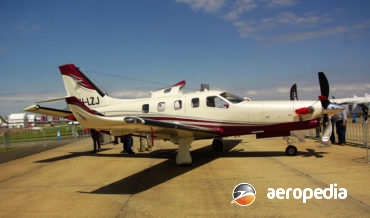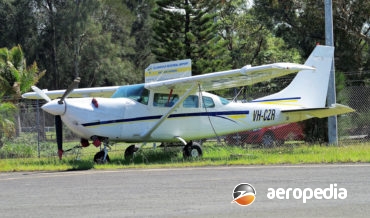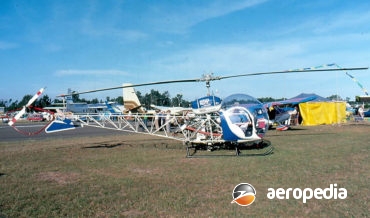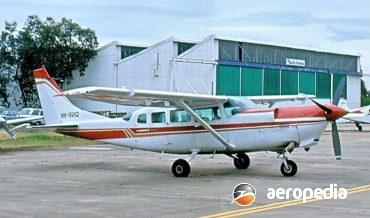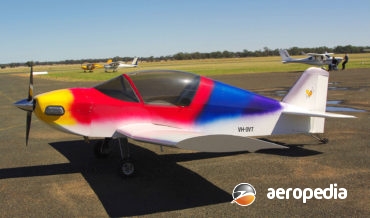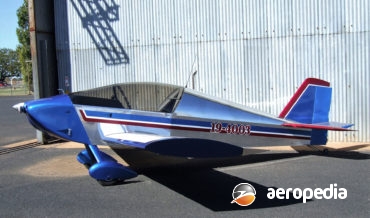David C. Eyre
Edward Stinson in 1926 formed Stinson aircraft with a facility at Willow Run in Detroit to build aircraft.
David C. Eyre
- May 8, 2019
The L-5 Sentinel was developed from the Stinson Voyager light touring monoplane and, when compared, the Sentinel had more power and a strengthened airframe to enable it to be flown in the role of air-observation post under combat conditions.
David C. Eyre
- May 8, 2019
The Stinson Model A first appeared in 1934 and was advertised as “Americas fastest and most economical Tri-Motor” and was built to compete against the Boeing 247and the Douglas DC-2, but was less costly to purchase and operate, and had better short-field ability.
David C. Eyre
- May 8, 2019
As well as developing the tri-motor Model A, Stinson Aircraft was also working in 1933 on the SR Reliant series of light passenger monoplanes.
David C. Eyre
- May 8, 2019
In 1919 Sopwith Aviation and Engineering Co Ltd produced the Dove, this being a two/three-seat variant of the Sopwith Pup fighter of World War I converted for use as a private touring and training aircraft.
David C. Eyre
- May 8, 2019
The Gnu was introduced in 1919 by the Sopwith Aviation Co of Canbury Park Road, Kingston-on-Thames, as a three-seat touring biplane or taxi aircraft with an enclosed cabin for the two passengers, although the enclosed cabin was found to be very cramped and was not popular and most were operated
David C. Eyre
- May 8, 2019
The Wallaby, which was based on the Sopwith B.1 Bomber, was similar to the Sopwith Atlantic, which had been used by Harry Hawker in an unsuccessful trans-Atlantic attempt.
David C. Eyre
- May 8, 2019
Sorrell Aviation in the United States produced a series of ultralight aircraft, including the Guppy and the Hiperlight.
David C. Eyre
- May 8, 2019
Southern Cross Aviation Ltd was formed in Toowoomba, QLD, in 1957 to explore the feasibility of designing and manufacturing a light aircraft in Australia to compete against the American imports of Cessna and Piper.
David C. Eyre
- May 8, 2019
The Sabre is designed and built in the Slovenia by SOVA and is available as a factory built machine, and can be registered under ultralight rules or in the general aviation category.
David C. Eyre
- May 8, 2019
The Spad series of fighting scouts was produced by the Societe Pour Aviation et ses Derives (SPAD), the chief designer being Louis Bechereau.
David C. Eyre
- May 8, 2019
The British light aircraft manufacturing company, Simmonds Aircraft Ltd, underwent some changes in 1930 and became Spartan Aircraft Ltd and produced aircraft initially at its Weston, Southampton facility, before moving to East Cowes on the Isle of Wight on 20 February 1931.
David C. Eyre
- May 8, 2019
The Cruiser was a three-engine low-wing cantilever monoplane with a crew of two and seating six passengers.
David C. Eyre
- May 8, 2019
Produced as a successor to the Simmonds Spartan, between 1930 and 1935 Spartan Aircraft Ltd constructed a total of twenty-six examples of its Three-Seater, the first two being completed at Southampton, and the remainder at the company’s new facility at East Cowes on the Isle of Wight.
David C. Eyre
- May 8, 2019
The SP-30 is a two-seat light sporting and training aircraft manufactured in Russia by Spectr Aero and is described as an upgrade and development of the Zenair CH-701 aircraft series with changes aimed at improving its performance and ability to meet requirements in the light-aviation field in Russia.
David C. Eyre
- May 8, 2019
Designed and developed in Canada by Spectrum, the Beaver is a strut-braced high-wing monoplane of aluminium tube construction with double surface Dacron covering, and with a Mylar reinforced leading edge.
David C. Eyre
- May 8, 2019
The Spencer Air Car, also known as the Amphibian Air Car, was designed by Mr P H Spencer as a four-seat amphibian bearing a strong resemblance to the Republic Seabee, which he also designed.
David C. Eyre
- May 8, 2019
In 1957 Mr Tony Spezio commenced design of a two-seat light sporting aircraft that reminded him of some of the racing aircraft that were seen around the airshow circuit in the United States in the 1930s, particularly the Howard Ike.
David C. Eyre
- May 8, 2019
The Spitfire Aircraft Company Ltd was set up to build kits and parts for amateur builders interested in building and flying a full scale replica of the Supermarine Spitfire constructed from wood.
David C. Eyre
- May 8, 2019
The Ultrabat was conceived by George Markey in Sydney, designed by Graham Swannell and built by Scott Winton and George Markey as a high performance sporting aircraft.
David C. Eyre
- May 8, 2019
Marketed by Sport Copter Inc of Scappoose, Oregon, the Vortex is one of a series of gyrocopters produced in three basic variants, the Sportscopter II, Vortex M-912 and the Lightning, the latter being a basic model.
David C. Eyre
- May 8, 2019
The Panther was designed by Daniel Weseman of Florida, US, a pilot and machinist who was involved in making conversions of the General Motors Corvair six-cylinder engine for installation in light aircraft.
David C. Eyre
- May 8, 2019
The RF-4 was one of a series of self-launched gliders designed by Rene Fournier in France. The first of the motor glider series of aircraft was the RF-01 (F-WJGX) built in a disused laundry in Cannes over a period of three years.
David C. Eyre
- May 8, 2019
The Sportavia-Putzer series of aircraft was designed in Germany by Mr M Rene Fournier, the company being formed in 1966 to take over from Alpavia the manufacture of his series of light aircraft.
David C. Eyre
- May 8, 2019
The FSRW, constructed almost entirely of fibreglass, was initially a development project of the Sydney University School of Aeronautical Engineering, in 1974.
David C. Eyre
- May 8, 2019
The design of the Sidewinder was commenced in 1958 by Jerry Smyth of Huntington, Indiana, it being a two-seat side-by-side sporting monoplane.
David C. Eyre
- May 8, 2019
One of a new breed of high performance homebuilt aircraft available to the amateur constructor in kit form, the Seawind 2500 was designed by Seawind Industries of Haliburton, Ontario, Canada,the prototype (C-GFNL) flying for the first time on 23 August 1982.
David C. Eyre
- May 8, 2019
This series of agricultural aircraft has received a number of appellations over the years, being known as the Snow Commander, Ayres, Marsh, Thrush, Aero Commander Ag Commander and the Rockwell Thrush Commander.
David C. Eyre
- May 8, 2019
In 1979 Socata, the general aviation division of Aerospatiale, was continuing with development of a series of light aircraft and at this time the TB-10 was named the Tobago, and a new less powerful model became the TB-9 Tampico, the latter being aimed at the training market.
David C. Eyre
- May 8, 2019
In 1975 the Research and Development Department of the Societe de Construction D’Avions de Tourisme et D’Affaires in France (a subsidiary of Aerospatiale) initiated the design of a new series of touring monoplanes.
David C. Eyre
- May 8, 2019
The TB-20 Trinidad was designed by Socata, a subsidiary of Aerospatiale, as a natural up-market development of the popular TB-10 Tobago but fitted with a retractable undercarriage, a 187-kw (250-hp) engine, and an increased fuel capacity.
David C. Eyre
- May 8, 2019
TBM was established by the Aerospatiale General Aviation Division, Socata, and the US manufacturer Mooney, to produce a high-performance business aircraft.
David C. Eyre
- May 8, 2019
The TBM 850 is an up-rated variant of the TBM 700 business aircraft to take a more powerful PT6A-66D turboprop and was aimed at the market to provide a higher cruising speed and journey
David C. Eyre
- May 8, 2019
The TBM-900 is a development of the business and executive / utility aircraft series produced in France since it was introduced to the market in 1990, examples being operated over the years by the French Arm and Air Force, with 324 TBM-700s being delivered, followed by 338 TBM-850s, being replaced
David C. Eyre
- May 8, 2019
In 1985 Soloy Aviation Solutions converted a Cessna 206 to turbine power, replacing the Continental TIO-520 engine with a Rolls Royce / Allison 250 turboshaft, this engine providing in this installation 311-kw (417-shp) and gives better performance, safety and value, and since then other Cessna models including the 182 and
David C. Eyre
- May 8, 2019
For many years Soloy Conversions in the United States has been involved in converting of aircraft and helicopters to turbine power, using the Allison 250 range of turbines.
David C. Eyre
- May 8, 2019
The Hiller UH-12 series of utility helicopters has been in service world-wide for many years, being produced by the original Hiller company and was known as the Model 360 family, and some were produced by Fairchild-Hiller, , being supported by Hiller Aviation Inc which produced new or re-manufactured examples until
David C. Eyre
- May 8, 2019
Soloy Aviation Solutions has for many years been involved in converting aircraft and helicopters to turbine power and aircraft involved have included the Cessna 206, 207, 208 etc.
David C. Eyre
- May 8, 2019
The Onex is one of a series of light aircraft produced in the United States by Sonex Aircraft of Oshkosh in Wisconsin as a kit for amateur construction, the first Onex variant being flown for the first time on 27 January 2011.
David C. Eyre
- May 8, 2019
The Sonex is a light two-seat monoplane designed by John Monnett, designer of the Monnett Sonerai, Moni, and others, and was introduced in 1998.
David C. Eyre
- May 8, 2019
Recent Comments
Archives
Categories
- No categories
Categories
- No categories
Latest Posts
Newsletter


